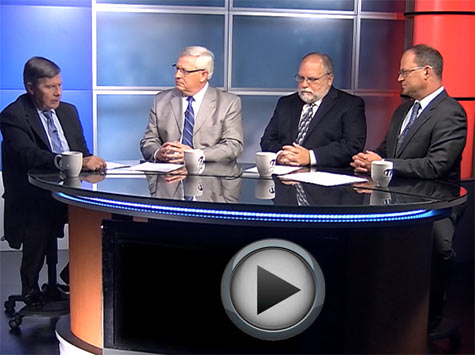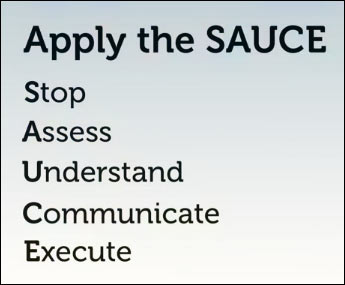Telecommunications Industry Registered Apprenticeship Program (TIRAP) board chairman Scott Kisting today urged members of the wireless infrastructure industry to watch a newly produced video aimed at strengthening workplace safety, enhancing workplace quality, and improving worker health and safety training.

Pictured above during the TIA-produced video are, from left, Jim Maddux, Paul Roberts, John Erichsen and Scott Kisting.
Initiated by TIRAP and produced by the Telecommunications Industry Association (TIA), the video released today, the first of a planned ongoing series, was moderated by Jim Maddux, Director of Construction Safety, OSHA; with panelists Paul Roberts, Vice President of Compliance, American Tower Corporation; John Erichsen, Structural Engineer and Chairman TIA/TR14 Committee; and Scott Kisting, Sr. Vice President, MUTI Tower Service Company and Chairman of the TIRAP Board of Directors.
In the general discussion video regarding tower safety and work quality, available here, Maddux emphasized that the OSH Act requires employers to provide a safe and healthful work environment for their workers.
“But to be really safe, employers need to go beyond the OSHA standards, implement safety and health programs, make sure that they have effective policies and training programs, and supervise their employees in a way that minimizes unsafe actions,” he said.
Being a ‘student’ is a career-long obligation
He also said, “In the scheme of things, our industry is still very young. It is in a state of almost constant change. The men and women who do this work always have to be students, as what they are doing today may not be what they will be doing tomorrow. We have to do a better job in communicating the standards to each member of our industry. We must understand how the standards apply, to what we are responsible for and ensure that we know when to refer an issue from a contractor to an engineer or when an engineer should be advising an owner.”
Roberts also reinforced the need to follow standards.
One important area to accelerate safety within the industry, he said, is “to increase our compliance with our industry standards.” Roberts believes it’s not only important to improve industry standards, but “to work with our industry associations to ensure that we properly define and illustrate the expectations for proper tower work.”
“But, perhaps most importantly, we need to make sure that we have an attitude that is set in our workforce that anyone can stop, when they feel that level of risk increase, when they feel that level of discomfort, that the best thing to do is stop, just stop and back away from the task, understand it and move forward.”
Erichsen, whose committee writes the consensus standard ANSI/TIA-1019 for the installation, alteration and maintenance of antenna supporting structures, said it’s necessary for workers to be able to “effectively plan and execute the statement of work that is out in the field so the employees know what they should be doing and what their roles are in the process.”
He stressed that engineers and contractors have to be willing to talk to each other and “ask the proper questions. The owners have to make it obvious to all involved that that’s an important part of the process.”
 Personal responsibility is emphasized
Personal responsibility is emphasized
Kisting focused upon taking personal responsibility as a way to cut down on incidents, deaths and fatalities, and introduced SAUCE, an acronym for Stop, Assess, Understand, Communicate, Execute.
“We as an industry have to recognize that each and every individual in the industry has the obligation and must apply the courage to stop and apply the sauce when it’s necessary,” Kisting said.
Kisting explained, “No matter how good of a job we do at planning, it’s still construction and there are going to be changed conditions.” When these changed conditions occur, workers have to have the courage to stop the work and further assess it, Kisting said.
He strongly believes that through better communications and a better understanding of applicable standards, the industry will see a marked decline in worksite incidents.
The video emphasizes the need for industry executives, engineers, and contractors to ask the tough questions and not be afraid to intervene when necessary. It also urges workers to stop when concerned about safety conditions – and not continue until those conditions have been improved.













